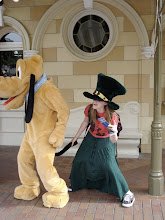I suppose it's better to be having doubts now than later. I haven't been satisfied with the few pysanky I've actually produced so far, and I'm becoming daunted by the level of skill this would actually require- that I don't yet have. And then, a frightening thought occurred to me: If I don't do the pysanky, what will I do? I've been thinking about this for about a week now, and I'm starting to form some possible alternate ideas.
- modular designs (pysanky inspired- modernizing traditional designs)
- modulars and batiks (ibid)
- printed modulars (etchings + watercolor? litho? woodcut?)
- print + drawn modulars + batik
- modulars + batik + costume design*
- wax as a medium/link between mediums: ie. pysanky, batik, wax-resist painting/ceramic, lost-wax sculpture/jewelry, encaustic*
- batik + costume + ink/paint sketches*
- re-purposing materials (glass dress, etc)*
* (requires more thought on actual production and/or additional theme)
I want to work with something I feel comfortable enough in my skills to experiment without loss of quality. I've always felt strength in design, and in sewing, and I want to incorporate things I learned last semester in Costuming if possible. Batik is something I feel comfortable working with; the dying process is similar to pysanky, and I found it a fair bit easier than working with eggs. I also think that woodcuts are a potential double-tool: I can use them to produce variations of the modular designs relatively easily, and I can use woodcut blocks as stamps to create batik patterns in addition to free-hand designs. (Heck, maybe I could even try literally printing on fabric, rather than paper.)
I went to the Freer Gallery in DC today, and stumbled upon a show in the walkway between it and the Sackler Gallery. It was a collection of prints by Whistler, mainly architectural "sketches" of Amsterdam and Venice. One of the signs talked about how Whistler experimented with different types of papers, methods, etc until he was satisfied. And at this moment, I find myself thinking more and more that a little experimentation might help. I've been so focused on techniques and designs, and I've honestly wanted to chuck my sketchbook across the room in frustration. I think the pysanky concept, while potentially interesting, is not the best choice for such a relatively short period of time. It's something I'll have to work on over several years.
For now, I'm going to keep sketching, taking photos, and thinking.































